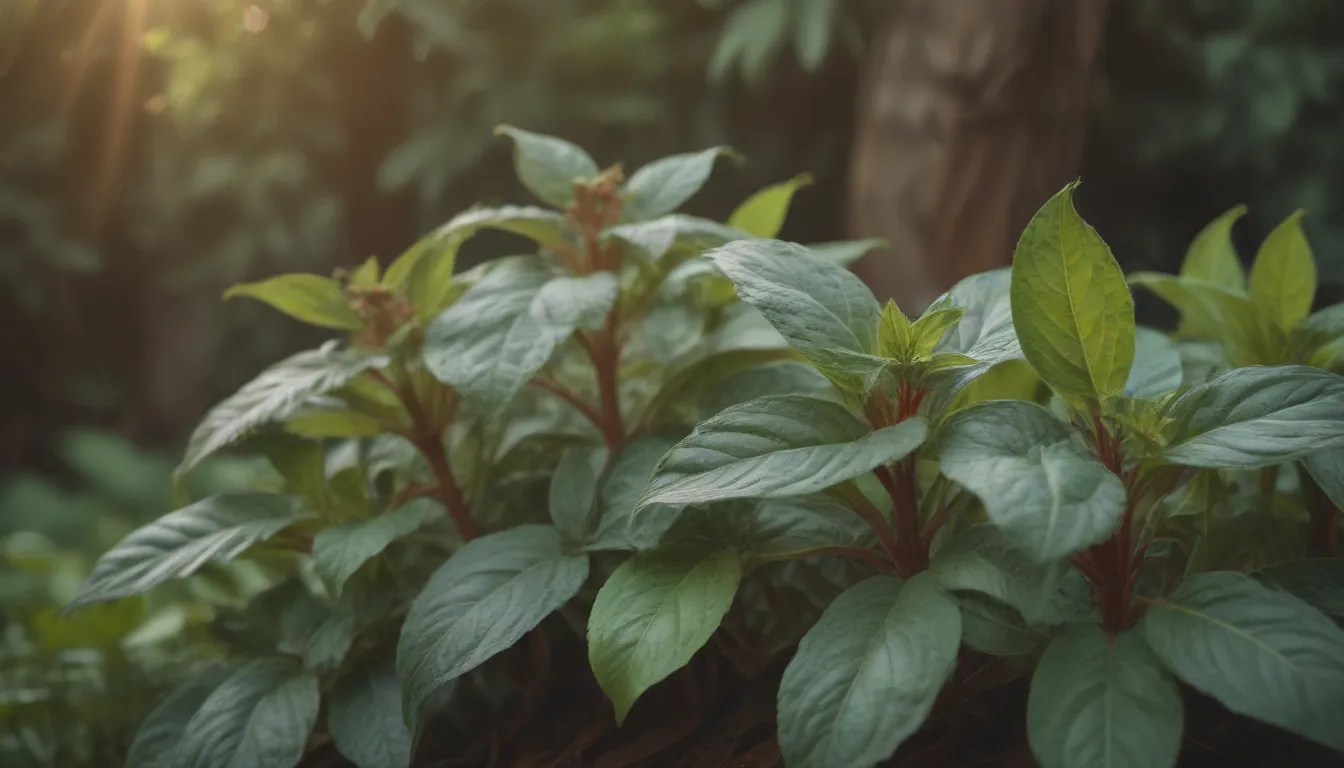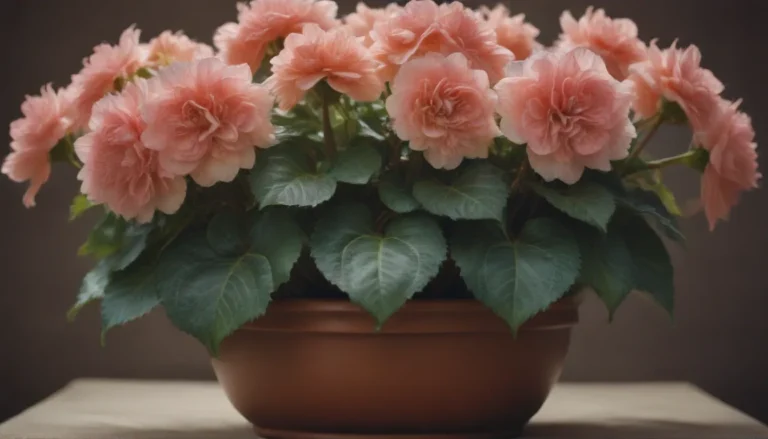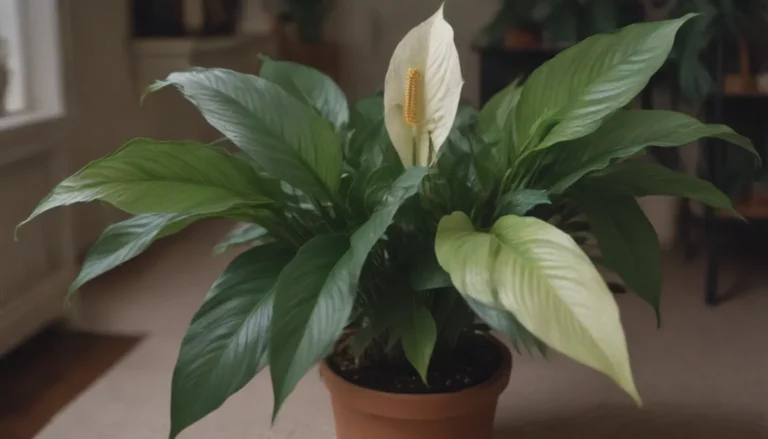The Ultimate Guide to Growing Cinnamon Basil in Your Herb Garden

Are you looking to add a unique twist to your herb garden? Look no further than cinnamon basil! This delightful herb combines the classic flavor of traditional basil with a sweet hint of cinnamon, making it a standout addition to any herb collection. With its distinctive violet central stems and deep green leaves, cinnamon basil is not only visually appealing but also offers a range of benefits for your garden.
In this comprehensive guide, we will take you through everything you need to know about growing and caring for cinnamon basil. From planting to harvesting, we’ve got you covered with all the tips and tricks to ensure a successful harvest of this flavorful herb.
Why Choose Cinnamon Basil?
Cinnamon basil is not just your average herb – it offers a range of unique characteristics that set it apart from other varieties. Here are a few reasons why you should consider adding cinnamon basil to your garden:
- Distinctive flavor profile: With hints of both traditional basil and sweet cinnamon, this herb adds a new dimension to your culinary creations.
- Pest-repellant properties: Cinnamon basil acts as a natural pest deterrent, making it an excellent companion plant for other popular garden crops.
- Ornamental beauty: With its attractive violet stems and lavender-pink blooms, cinnamon basil is as visually appealing as it is flavorful.
Getting Started: Planting Cinnamon Basil
When to Plant
Whether you’re starting from seed or purchasing nursery-grown plants, it’s essential to wait until the threat of frost has passed before planting cinnamon basil. Ideally, temperatures should consistently be above 70 degrees Fahrenheit during the day and above 50 degrees Fahrenheit at night. For an early start to the growing season, consider starting seeds indoors about a month before your last expected frost date.
Selecting a Planting Site
Cinnamon basil thrives in full sun and well-draining soil. Choose a location in your garden that receives ample sunlight throughout the day and has fertile soil. Remember to avoid planting cinnamon basil in the same spot where you’ve grown basil or other mint family members in the past two to three years to prevent issues with pests and diseases.
- Full sun exposure
- Fertile, well-drained soil
- Rotate crops to maintain plant health
Spacing, Depth, and Support
When planting cinnamon basil, space the plants 8 to 12 inches apart to allow for proper growth. While cinnamon basil has a sturdy central stem that doesn’t require support, mulching around the plant can help suppress weeds and retain soil moisture.
- Space plants 8 to 12 inches apart
- Mulch to suppress weeds and retain moisture
Caring for Your Cinnamon Basil Plant
Light
Cinnamon basil thrives in full sunlight, requiring 8 to 12 hours of direct sun each day to reach its full potential. Make sure to plant it in a location where it can soak up plenty of sunshine to promote healthy growth and flavorful leaves.
Soil
The soil for cinnamon basil should be moist, well-draining, and moderately rich in nutrients. If your soil is lacking in quality, consider amending it with organic matter before planting to provide the best growing conditions for your herb.
Water
Unlike some herbs, basil requires consistent moisture to thrive. Water your cinnamon basil deeply once a week, more frequently during hot summer weather, to ensure it stays hydrated and healthy.
- 8 to 12 hours of sunlight daily
- Moist, well-draining soil
- Regular watering to maintain moisture levels
Temperature and Humidity
Cinnamon basil thrives in warm weather and can be sensitive to cool temperatures. Make sure to plant it during the warmer months to prevent damage to the leaves. Additionally, provide adequate airflow to prevent issues with high humidity and overcrowding.
- Warm-weather plant
- Protect from cooler temperatures to prevent leaf damage
- Ensure proper airflow to reduce humidity
Fertilizer
While basil doesn’t require excessive fertilization, a moderate amount of balanced fertilizer can help support healthy growth. Apply a 5-10-5 fertilizer once or twice during the growing season for garden-grown plants, or use a diluted liquid fertilizer every four to six weeks for potted plants.
- Moderate fertilizer application
- Use balanced fertilizer for optimal growth
Cinnamon Basil Varieties and Characteristics
Cinnamon basil is often confused with Thai basil due to their similar names, but they are distinct varieties with unique flavors and characteristics. Cinnamon basil (Ocimum basilicum ‘Cinnamon’) has a spicy cinnamon taste with fresh, earthy aromas, while Thai basil (Ocimum basilicum var. thyrsiflora) offers a distinct black licorice flavor. Understanding the differences between these varieties can help you choose the right herb for your culinary needs.
- Cinnamon basil: Spicy cinnamon flavor
- Thai basil: Black licorice taste
Companion Plants for Cinnamon Basil
Cinnamon basil makes an excellent companion plant for a variety of garden crops, thanks to its pest-repellant properties and ability to attract beneficial pollinators. Consider planting cinnamon basil alongside tomatoes, peppers, carrots, beets, and other herbs like cilantro and dill to create a thriving garden ecosystem that supports plant health and productivity.
- Deters pests such as aphids and thrips
- Attracts beneficial pollinating insects
- Companion plants include tomatoes, peppers, and herbs
Harvesting Tips for Cinnamon Basil
When it comes time to harvest your cinnamon basil, follow these tips to ensure a bountiful yield of flavorful leaves:
- Harvest regularly to promote leaf growth
- Use sharp scissors or a knife to cut leaves at the stem tip
- Harvest in the early morning for optimal freshness
Growing Cinnamon Basil in Containers
For gardeners with limited space, cinnamon basil can thrive in containers with the right care and attention. Choose a container with adequate drainage and fill it with well-draining potting mix to provide the best growing conditions for your herb. Remember to water your container-grown cinnamon basil more frequently than garden plants to prevent drying out.
- Choose a container with drainage holes
- Use well-draining potting mix
- Water container plants regularly
Pruning and Maintenance
Regular pruning is key to maintaining healthy cinnamon basil plants and preventing them from flowering too early. Whether you’re growing basil for culinary use or as an ornamental plant, proper pruning techniques can help promote vigorous growth and flavorful leaves.
- Pinch off central stem to encourage leaf growth
- Remove flower buds to prevent premature flowering
Propagating Cinnamon Basil From Seed
Starting cinnamon basil from seed is a cost-effective way to expand your herb garden and ensure a fresh supply of flavorful leaves. Whether you choose to sow seeds indoors or directly in the garden, following proper seeding and thinning techniques can help you establish healthy, robust plants for a successful harvest.
- Start seeds indoors or sow directly in the garden
- Thin seedlings to ensure adequate spacing
Overwintering Your Cinnamon Basil Plant
While cinnamon basil is sensitive to cold temperatures and typically doesn’t survive the winter outdoors, you can try to extend its lifespan by bringing it indoors and providing adequate care. By placing your potted cinnamon basil near a sunny window and keeping it well-watered, you may be able to enjoy fresh herbs for a few extra weeks before the plant eventually succumbs to winter dormancy.
- Bring potted plants indoors for extended lifespan
- Provide adequate light and water during winter months
Common Pests and Diseases
While basil is relatively resistant to pests and diseases, it can be susceptible to issues like fusarium wilt, gray mold, and bacterial wilt. Keep an eye out for common pests such as aphids and Japanese beetles, and address them promptly with natural control methods like insecticidal soap and hand-picking.
- Monitor for common basil pests and diseases
- Use natural control methods for pest management
In summary, growing cinnamon basil in your herb garden can add a unique and flavorful twist to your culinary creations. By following these tips and guidelines for planting, caring, and harvesting your cinnamon basil plants, you can enjoy a bountiful harvest of fresh, aromatic leaves throughout the growing season. With its pest-repellant properties and ornamental beauty, cinnamon basil is a versatile herb that can enhance both your garden and your kitchen creations. Happy gardening!





